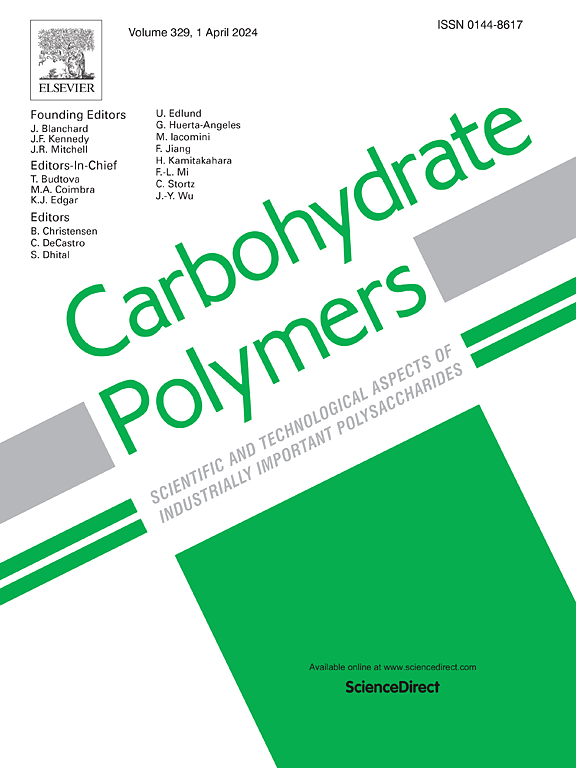First evidence of cryo-milling enhancing enzymatic production of chitooligosaccharides from chitin biomass
IF 10.7
1区 化学
Q1 CHEMISTRY, APPLIED
引用次数: 0
Abstract
Cryo-milling offers an energy-efficient approach to process α-chitin, the most prevalent and structurally robust chitin form. Unlike ball-milling, cryo-milling operates at low temperatures (<123 K), preventing heat-induced charring and loss of chitooligosaccharide. This study investigated the effects of various cryo-milling conditions on α-chitin, resulting in reduced crystalline plane intensity, increased surface area, and smaller particle size without causing substrate breakdown or functional group loss. Additionally, the study investigated cryo-milled α-chitin's enzymatic hydrolysis for the first time. Using Paenibacillus sp. LS1's chitin-active-secretome, cryo-milled α-chitin yielded twice as much GlcNAc compared to unmilled α-chitin. Hydrolysis with recombinant Chi5 from Paenibacillus sp. LS1 increased (GlcNAc)2 and GlcNAc yields by twofold and fourfold, respectively, while recombinant StrChiA from Streptomyces sp. UH6 led to an elevenfold and twofold increase, respectively. Overall, cryo-milling emerges as a gentle yet effective alternative to ball-milling, significantly enhancing enzymatic saccharification of α-chitin by increasing surface area, thereby optimizing chitooligosaccharide production.

求助全文
约1分钟内获得全文
求助全文
来源期刊

Carbohydrate Polymers
化学-高分子科学
CiteScore
22.40
自引率
8.00%
发文量
1286
审稿时长
47 days
期刊介绍:
Carbohydrate Polymers stands as a prominent journal in the glycoscience field, dedicated to exploring and harnessing the potential of polysaccharides with applications spanning bioenergy, bioplastics, biomaterials, biorefining, chemistry, drug delivery, food, health, nanotechnology, packaging, paper, pharmaceuticals, medicine, oil recovery, textiles, tissue engineering, wood, and various aspects of glycoscience.
The journal emphasizes the central role of well-characterized carbohydrate polymers, highlighting their significance as the primary focus rather than a peripheral topic. Each paper must prominently feature at least one named carbohydrate polymer, evident in both citation and title, with a commitment to innovative research that advances scientific knowledge.
 求助内容:
求助内容: 应助结果提醒方式:
应助结果提醒方式:


